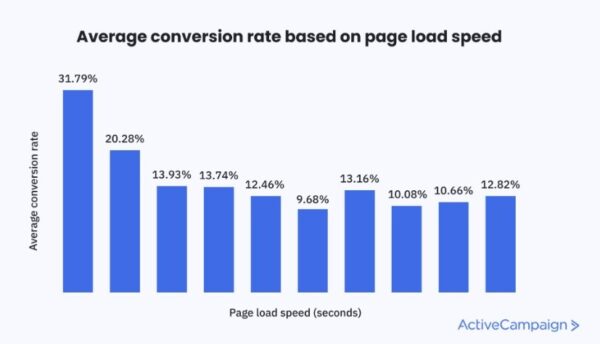Perfecting Your Salesforce UX for Sales Reps and Agents
In 2009, an epidemic of Toyota drivers uncontrollably accelerating broke into the mainstream as a 911 call of a man who couldn’t slow down his car went viral.
In the proceeding years, media coverage centered around Toyota’s alleged coverup of faulty components, but Malcolm Gladwell’s podcast Revisionist History suggested a different explanation: bad design.
Despite claiming the brakes weren’t working, information collected from the cars’ black boxes suggested that the brakes were never even pressed—the drivers were pressing the acceleration pedal, thinking it was the brake. Users didn’t understand the pedal design.
Bad design can be frustrating, expensive, and even deadly, but your Salesforce UX doesn’t have to be. Even a correctly functioning product can drive users away from your business when their experience is poorly managed, and that is why companies like Rainmaker that offer Salesforce integration management are an essential tool for businesses today.
What is UX?
UX, or User Experience, encompasses all the interactions a user has with an organization. Although UX is often used interchangeably with UI, User Interface is a subset of the entire User Experience. UX includes branding, functionality, and content—the entire picture of a customer’s experience—whereas User Interface only refers to the digital space where the interaction occurs.
Put another way, UI is the system that allows user interaction, but UX is the way a user feels when interfacing with a system.
Retail businesses dedicate countless hours and dollars meticulously engineering every aspect of their retail spaces. Everything from the layout of the aisles to the specific script the cashiers use is carefully tuned to the specific experience the organization wants to funnel its customers into.
All that attention to detail makes sense for in-person retail, but in today’s digital-first world, customers’ digital experiences matter just as much—if not more—than their experience in a brick-and-mortar store.
While some holdouts against the digital revolution may not think a customer’s digital experiences are important, consider this incredible fact: the conversion rate from a web page that loads in one second is 32%, but drops all the way down to 20% if the page takes two seconds to load. One single second of bad UX is all it takes to lose 12% of your potential leads, and this same frustration applies to sales reps and agents too.

Salesforce and UX Design
As a cloud-based software platform, Salesforce is no stranger to the importance of UX.
Salesforce is so committed to promoting good UX design that it created a User Experience Designer Certification to recognize designers at the top of their craft. It has a rigorous training and certification process to give a credential to designers who embrace its human-centered experience philosophy.
Salesforce also understands that end customers aren’t the only users of your UI. As work has moved remote, organizations are starting to prioritize their employees’ user experience and the experiences of their prospective leads.
Good UX is not just a flashy website and attractive graphics. It’s also intuitive organization, useful analytics, and practical tools for sales reps and agents.
This shift towards balancing the experiences of all users—from intern to CEO—is so profound that it’s generated a new term: Employee Experience (EX).
The reality is that the demarcation between customer and employee is more gradated than it used to be, as CRM platforms, for example, need to be designed both for their customers and their customers’ customers. That means that EX is not a separate category of good UX. It’s an essential component.

How to Optimize UX for Sales Reps and Agents
Tapestry portraiture is a beautiful art form. The personality and character able to be captured by individual strands of thread is something that takes a lifetime to master, but even a master craftsman only wants you to view the tapestry from one side. The backside of a tapestry is where connected bits of thread and knotted-off loose ends hide out of sight—important for the artist but unsightly for the viewer.
Many platforms handle UX the same way. Its design looks polished only from one side—to users unaware of the convoluted mess of connections and interfaces hiding on the back-end.
Your sales reps and agents deserve good UX too.
Not just for their own satisfaction but also their productivity. Good UX isn’t just aesthetics, it’s also functionality, and good UX design makes sales reps and agents better at their job.
Implementing Good UX for Sales Reps and Agents
According to designer and Information Architect Peter Morville, there are seven aspects to good UX. Good UX must be: Useful, Useable, Findable, Credible, Accessible, Desirable, and Valuable.
- Useful. Your platform is no good if nobody uses it. Good UX for sales reps and agents means UX that helps them accomplish their goals. This means prioritizing ease of use (and preserving ease of use with new functionality), allowing personalization to fit their workflows, and using various tools to make their sales process as efficient as possible.
- Useable. Key principles of useability for sales reps and agents include making the interface as consistent as possible, making errors easy to diagnose, offering feedback about the status of tasks, and offering comprehensive documentation.
- Findable. The best place to hide a leaf is in a forest. Your sales reps and agents don’t have time to sift through leaves: good UX includes easy-to-find tools and clear navigation.
- Credible. People lose credibility with their peers by telling lies in the social world. In the sales world, platforms lose credibility by being unreliable—losing data, failing to perform consistently, offering too little feedback on task statuses, etc.
- Accessible. Many tech users still hold onto a stigma that design that includes the needs of disabled users is harder to use for those with typical accessibility needs, but the reality is that accessibility is good for everyone. In a sales context, this includes design choices such as text-to-speech options, limited color-coding (or color-coding in tandem with other signifiers), options for dyslexia-friendly fonts, and alternatives to click-and-drag requirements.
- Desirable. A person’s aesthetic experience is frequently just as important as meeting their needs. In the competitive digital age, getting users onto your platform isn’t enough—they should enjoy the stay. While typically directed towards the end customers, you should prioritize the job satisfaction of your sales reps and agents as well.
- Valuable. Morville conceptualized the prior six aspects of good UX surrounding the seventh aspect: Value. Value is the sum of all aspects of good UX design. What is the value that your UX can bring to sales reps and agents?
How Rainmaker Can Help
Many businesses are racing to keep up with the astronomical pace of technology. Many organizations still rely on decades-old software, trying to retrofit it to their modern-day needs, but there’s a limitation to how far you can stretch old tools.
If you’re overwhelmed at the prospect of revolutionizing your UX for sales reps and agents, don’t be: Rainmaker is here to help.
Specializing in Salesforce Managed Services, Rainmaker takes the complicated technical process of implementing Salesforce platforms and takes the guesswork out of it so you can focus on what you do best. Rainmaker is committed to maximizing positive outcomes for you so you can maximize positive outcomes for your users.
See how Rainmaker can level up your business today by scheduling a meeting with their team of Salesforce experts.






